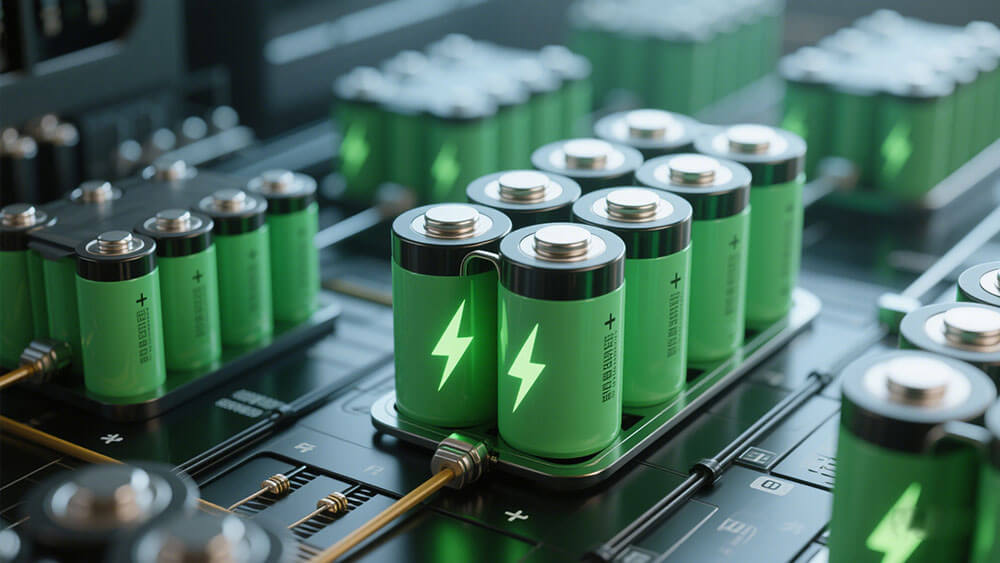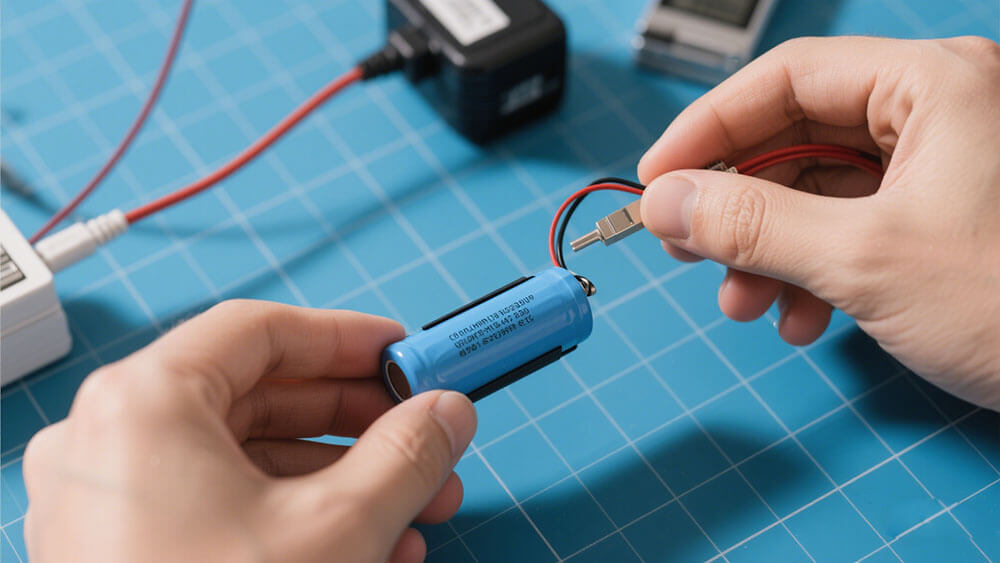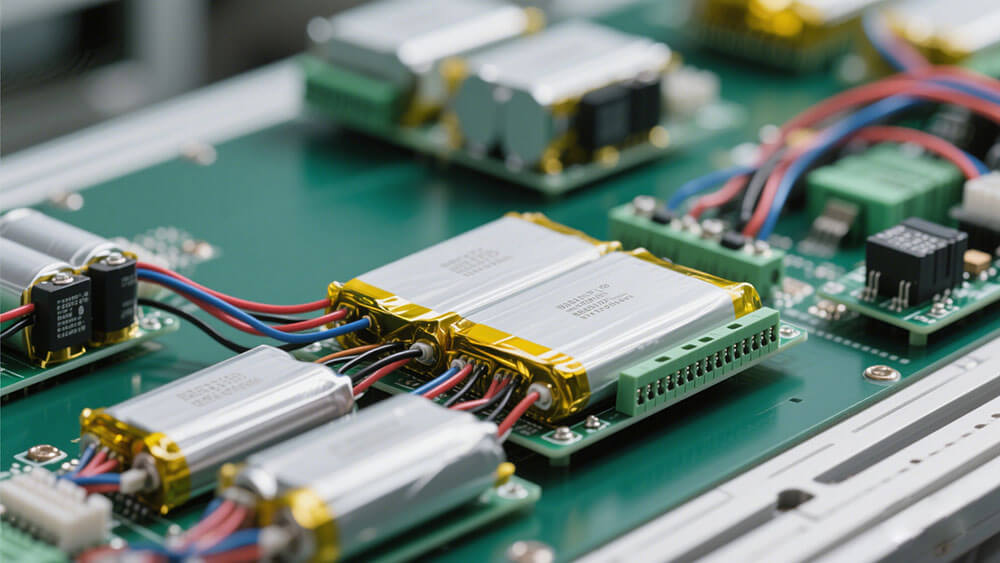Contents

Achieving the balance between performance and longevity about lithium battery is crucial for industries that depend on dependable energy solutions.Balancing performance and longevity ensures lithium-ion batteries meet user expectations without compromising durability, safety, or sustainability.
Key Takeaways
Performance Goals: High energy density, fast charging, adaptability to extreme temperatures. Risks include electrode degradation, lithium dendrite growth, and electrolyte breakdown.
Longevity Priorities: Extend cycle life and calendar life , while avoiding overcharging/discharging or extreme operating conditions.

Part 1: The Relationship Between Performance and Longevity
1.1 How Performance Impacts Longevity
The performance of lithium-ion batteries directly influences their longevity. High-performance batteries often operate under demanding conditions, such as elevated temperatures and rapid discharge rates, which accelerate degradation. For instance, variations in cycling protocols and ambient temperatures can introduce complexities in predicting battery life. Advanced frameworks like BatLiNet leverage inter-cell learning to account for diverse aging conditions, enabling more accurate lifetime predictions.
Key factors affecting battery longevity include capacity and internal resistance. Reduced capacity limits the range of electric vehicles (EVs) and diminishes usability in applications like medical devices and robotics. Increased internal resistance alters heat generation, leading to uneven aging across cells. These challenges highlight the importance of optimizing battery performance to prolong battery life.
1.2 The Trade-Offs Between High Performance and Extended Lifespan
Achieving high performance often comes at the expense of battery longevity. For example, deep discharge cycles exceeding 60% Depth of Discharge (DoD) can significantly reduce battery life. Similarly, highway driving conditions for EVs exacerbate degradation due to higher temperatures and discharge rates.
Empirical studies reveal that semi-empirical degradation models can reduce calendar and cycle aging by up to 26.7% within the first 100 days of operation. Multi-objective optimization techniques further minimize capacity loss while retaining energy efficiency and driving performance. These advancements underscore the need for a balanced approach to battery care, ensuring both high performance and a long lifespan.

Part 2: Challenges in Balance Between Performance and Longevity About Litium Battery
2.1 Material Degradation Under High-Performance Demands
Electrode Stress: High energy density and fast charging accelerate electrode cracking (e.g., silicon anodes swell, graphite degrades).
Dendrite Growth: Aggressive charging promotes lithium dendrites, risking short circuits and thermal runaway.
Electrolyte Breakdown: High voltages (>4.3V) or extreme temperatures degrade organic electrolytes, reducing lifespan.
2.2 Trade-offs in Charge/Discharge Protocols
Fast Charging: Rapid ion movement generates heat and mechanical stress, shortening cycle life.
Depth of Discharge (DoD): Frequent full discharges degrade electrodes faster, but limiting DoD sacrifices usable capacity.
Voltage Windows: Operating at upper/lower voltage limits boosts energy density but accelerates capacity fade.
2.3 Thermal Management Complexity
Heat Generation: High power output (e.g., EV acceleration) raises temperatures, accelerating side reactions.
Cooling Costs: Advanced thermal systems (liquid cooling, phase-change materials) add weight, cost, and complexity.
Low-Temperature Performance: Lithium plating at low temperatures reduces longevity but is unavoidable in cold climates.
Application | Performance Needs | Longevity Conflicts |
|---|---|---|
EVs | Fast charging (<30 mins) | High charge rates degrade anodes. |
Smartphones | Thin, lightweight designs | Smaller batteries age faster. |
Grid Storage | Daily deep cycling | Frequent cycling strains materials. |
Understanding these trade-offs allows you to select the most suitable chemistry for your specific needs. Explore custom battery solutions to meet your operational demands effectively.

Part 3: Solutions for Achieving the Balance
3.1 The Role of Battery Management Systems (BMS) in Optimizing Performance
A battery management system (BMS) plays a critical role in maintaining the balance between performance and longevity in lithium-ion batteries. By leveraging advanced technologies, BMS ensures optimal battery care through precise monitoring and control of key parameters.
Active Balancing: This technique redistributes charge among cells, addressing capacity imbalances caused by manufacturing variations or external conditions. It enhances battery efficiency and prolongs battery life by ensuring uniform performance across all cells.
Machine Learning (ML) Integration: ML algorithms analyze operational data to predict battery health and remaining useful life (RUL). This predictive capability enables proactive maintenance and optimized charging strategies, reducing the risk of unexpected failures.
Critical Function Management: BMS oversees essential functions such as charging control, thermal management, and cell balancing. These functions are vital for enhancing battery capacity and ensuring safe operation in high-demand applications like medical devices and robotics.
By combining active balancing with ML-based RUL estimation, you can achieve better state-of-health (SOH) across the battery pack. This approach supports longer lifespans and reliability, making it indispensable for industries like infrastructure and consumer electronics.
3.2 Advancements in Battery Technology
Recent advancements in battery technology have significantly improved both performance and longevity. These innovations address critical challenges in lithium-ion batteries, ensuring they meet the demands of modern applications.
Advancement Type | Improvement Percentage/Impact | Description |
|---|---|---|
AI-driven anomaly detection | Decreases fire risks by 70% | Enhances safety by predicting and preventing failures in battery packs. |
AI-powered adaptive charging | Reduces degradation by 30% | Prolongs battery usability by optimizing charging cycles. |
AI-assisted silicon anodes | Increases capacity by 50-80% | Improves energy storage capabilities of batteries. |
AI-driven hybrid battery management | Extends performance by 50% | Enhances efficiency in managing multiple battery packs. |
AI-optimized solid-state batteries | Increases ion conductivity by 50% | Improves efficiency and viability for mass production of solid-state batteries. |
These advancements demonstrate the potential of artificial intelligence (AI) in revolutionizing battery technology. For example, AI-powered adaptive charging reduces degradation, helping to prolong battery life. Similarly, AI-assisted silicon anodes enhance battery capacity, making them ideal for applications requiring high energy density, such as industrial tools and electric vehicles.
3.3 Custom Battery Solutions for Industry-Specific Needs
Custom battery solutions offer tailored approaches to meet the unique requirements of various industries. These solutions optimize battery management and enhance both performance and longevity.
Off-Grid Solar Systems: Custom lithium-ion batteries designed for extreme temperatures and harsh conditions ensure reliable energy storage and long-term durability. Lithium iron phosphate (LiFePO4) chemistry is often used for its safety and efficiency.
Industrial Equipment: Batteries built to withstand vibrations and high power demands feature shock-resistant designs and long cycle lives. These characteristics minimize downtime and maintenance, ensuring seamless operation in industrial settings.
By adopting custom battery solutions, you can address specific operational challenges and achieve optimal performance. Explore custom battery solutions from Large Power to find the right fit for your industry.
Balancing performance and longevity in lithium-ion batteries is essential for industries like consumer electronics and security systems. Advanced technologies, such as battery management systems (BMS), optimize battery capacity and prolong battery life. Custom battery solutions further enhance efficiency by addressing specific operational needs.
NMC battery balancing improves efficiency and lifespan by mitigating risks like overcharging and over-discharging. BMS plays a vital role in maintaining this balance, reducing costs and enhancing reliability.
FAQ
1. What industries benefit most from custom lithium-ion battery solutions?
Custom solutions support industries like medical devices, robotics, and Security System. They optimize reliability, safety, and performance for critical applications.
2. How does a Battery Management System (BMS) improve battery longevity?
BMS monitors and balances cells, preventing overcharging and overheating. It ensures consistent performance and extends battery life, especially in high-demand applications.
3. Why choose Large Power for custom battery solutions?
Large Power offers tailored designs for industry-specific needs, ensuring optimal performance and longevity.





